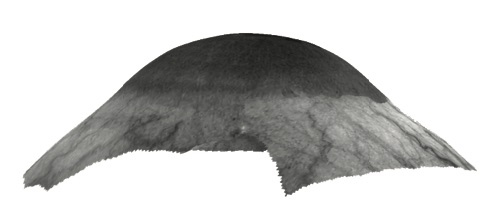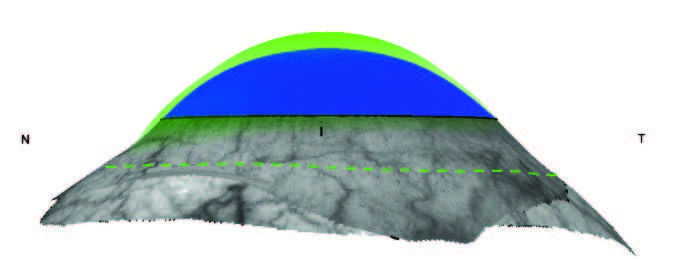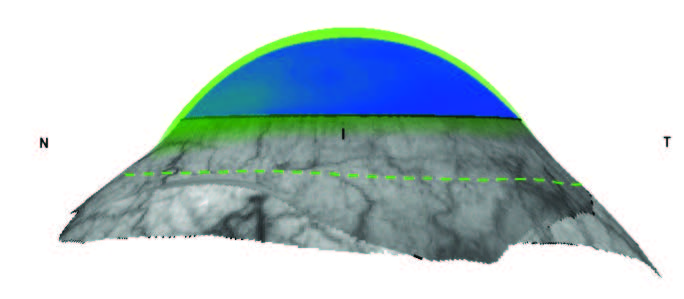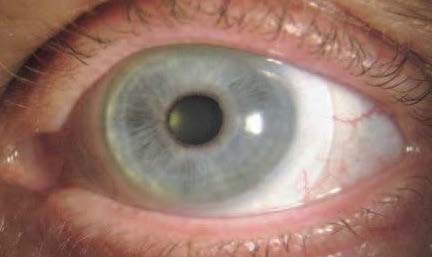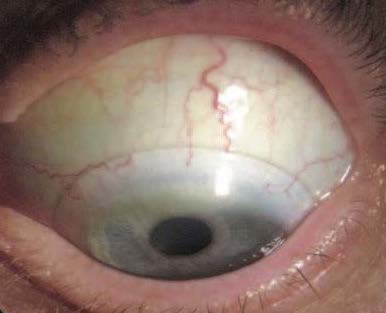INDICATION: Post Myopic LASIK Patient (>10D)
Virtual fitting designed a 5.5D reverse geometry lens with high accuracy in predicted central clearance and peripheral fit, avoiding multiple stepwise changes and remakes, simplifying lens fitting and reducing patient chair time.
This 70-year-old, 15 years post myopic LASIK patient (>10D) presented for scleral lens fitting. UCVA=20/40, BCSVA=20/25. The sMap3D™ corneal elevation map and 3D ocular surface imaging showed central corneal flattening (Figure 1).
Utilizing the “standard fit” mode, which preserves the normal relationship between the base curve (BC) and first peripheral curve (PC1) of the Elara Scleral lens, the sMap3D™ software predicted a central corneal clearance (CCC) of 565μ to adequately provide good optical zone (OZ) clearance. The CCC was considered excessive so the eye was “virtually fit” using the adaptive fit software mode which breaks the relationship between BC and PC1 seen in diagnostic fitting lenses (normally BC is slightly steeper than PC1) and attempts to “best fit” the requested CCC and OZ clearance. In this case, the requested CCC was 300μ, In order to achieve the desired fit, the BC had to be 5.5D flatter than PC1 (reverse geometry, Figure 2).
The reverse geometry lens was ordered, UCVA=20/20 which the patient described as “fantastic”, the fit was excellent (Figure 3), and OCT revealed a CCC of 293μ (Figure 4).

